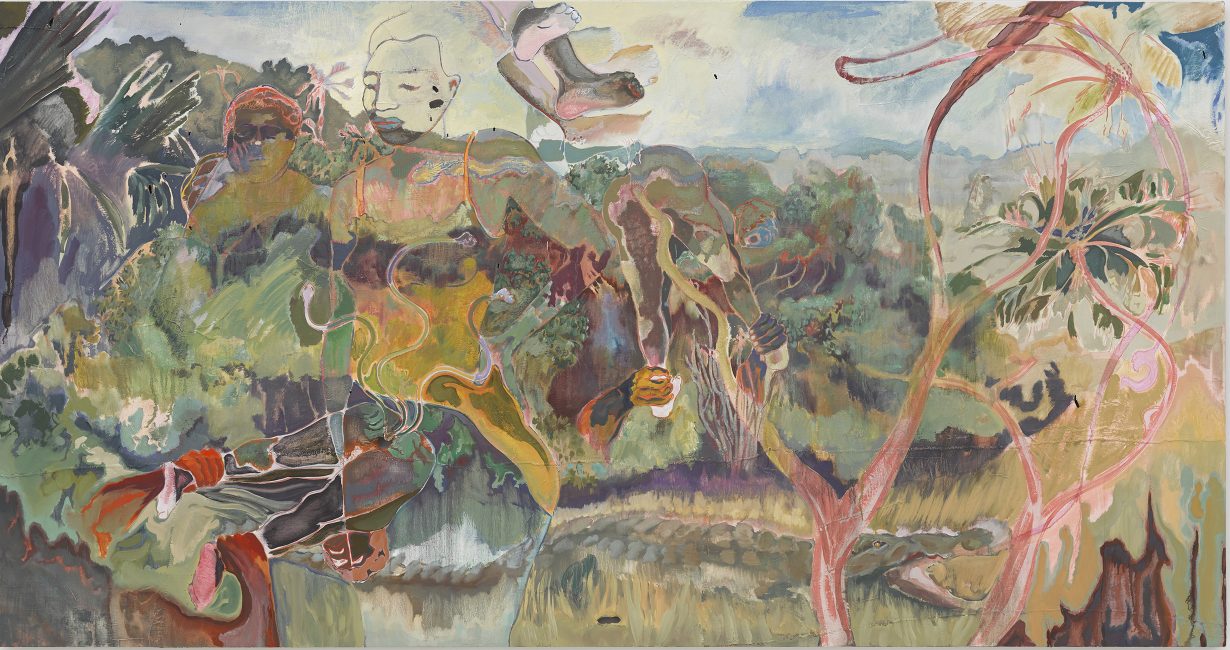Michael Armitage: Whitewashing and problematic gazes
Despite the plethora of skilful and innovative Black artists in the UK, the art scene continues to exclude and disregard the work of Black artists and remains a largely elitist world. With Black History month in mind (not that the relevance of Black history can be confined to a singular month and every other month is white history month), I wanted to raise a discussion around whitewashing and problematic gazes. An artist who eloquently deals with issues surrounding representation and eurocentrism is Michael Armitage.
Through his surreal paintings, the Kenyan-British artist Michael Armitage contests cultural constructions and assumptions. Armitage’s ‘Paradise Edict’ exhibition at the Royal Academy amalgamates the traditions of Western art with East African culture, confronting cliches, and a history of civil unrest. The ‘Paradise Edict’ exhibition explores the origins of this notion of paradise, and how the colonial era vision of an untarnished idyll is a concept constructed around harmful fantasies. Armitage’s ethereal and multidimensional paintings illustrate a complex narrative that weaves together traditional Western painting motifs and a context of political turmoil. Armitage subtly exposes how the European lens has exoticised landscapes and the idea of the ‘other’ in a degrading and problematic way. His paintings ironise and parody how throughout history European art has depicted foreign places and people. This projection of colonial fantasies onto the world raises a necessary discussion around the eurocentrism that deeply permeates the culture.
Armitage’s ethereal and multidimensional paintings illustrate a complex narrative that weaves together traditional Western painting motifs and a context of political turmoil.
In an interview, Armitage recalls learning about British history in school. Despite the school being located in Kenya, it was not African history that was viewed as relevant history.
Armitage through his art ironises the absurdity of this and the stories have been prioritised throughout history. Armitage sets up a kind of dichotomy between the traditions of European art his paintings employ, and their context grounded in East African politics. Through adopting a typically European form of expression to convey issues in East Africa, Armitage plays around with what has been considered a worthy subject for artistic expression in Western history. The dichotomy Armitage employs allows him to use art as a medium for representing the unacknowledged sides of history, in this case, scenes of electoral violence in Kenya.
The work of Black artists in both art and literature is frequently relegated to a subsection of art and categorised in relation to a context of pain.
The ‘Paradise Edict’ exhibition does not only showcase Armitage’s own work, it also includes the works of various contemporary East African artists that have shaped figurative painting in Kenya. In creating a space for non-Western artists, Armitage highlights how such influences are largely neglected and unrecognised by the overwhelmingly eurocentric art world. Armitage states that he “had always been a bit frustrated with how a lot of the painters (he) grew up with and have been influenced by have been represented – in terms of colonialism and naive primitivism – and (he) knew how frustrated they were with these descriptions”. I think a particularly significant point is being made here concerning how Black artists are viewed and interpreted: the work of Black artists in both art and literature is frequently relegated to a subsection of art and categorised in relation to a context of pain. As Armitage articulates, these artists ‘’were also part of a history, and saw themselves that way, whether it was political and cultural movements like Pan-Africanism or thinking about indigenous language.” The work of Black artists should be seen and appreciated in its own right and for its various layers, rather than inextricably tied to labels. As with any art, the work of Black artists interacts with multiple aspects of history and culture and should not be confined to such a narrow view.
Armitage’s elegant and fluid paintings offer a powerful commentary on the demeaning projections and exoticised gaze of European art history. By employing a stereotypically ‘Western’ form of visual expression to convey contemporary issues in East Africa, Armitage’s art transcends imposed categories. Through this kind of reverse appropriation, the ‘Paradise Edict’ exhibition helps redefine how the work of Black artists is encountered and understood.

Comments